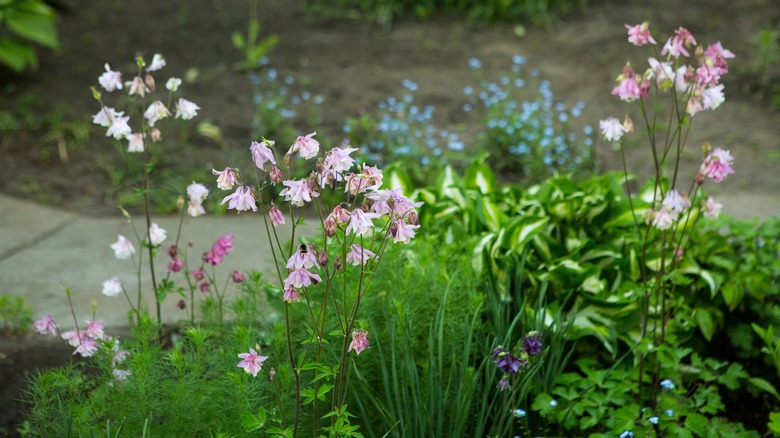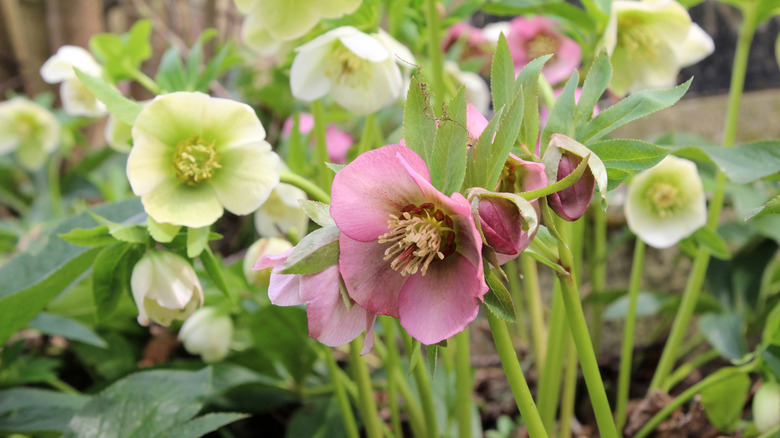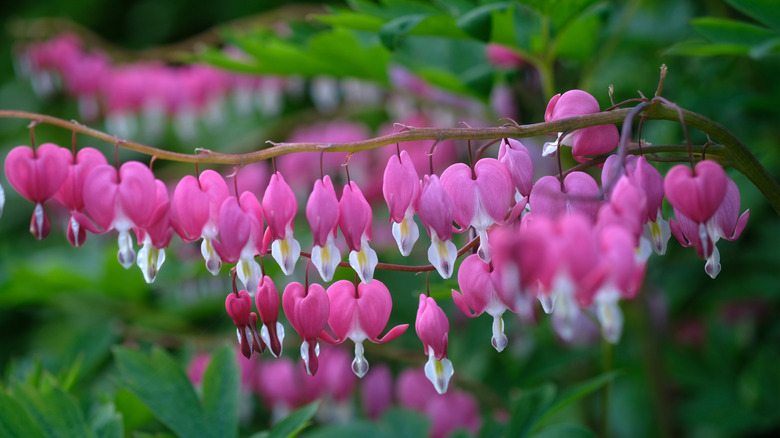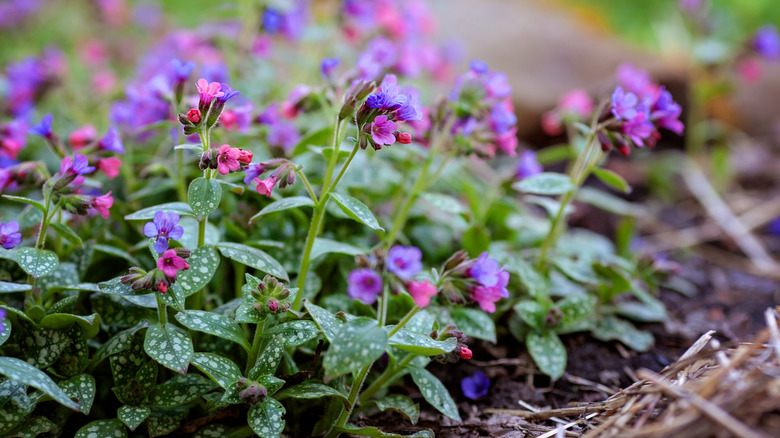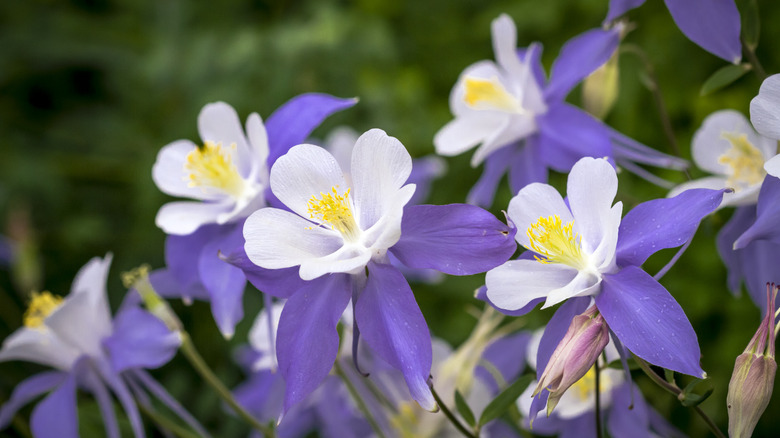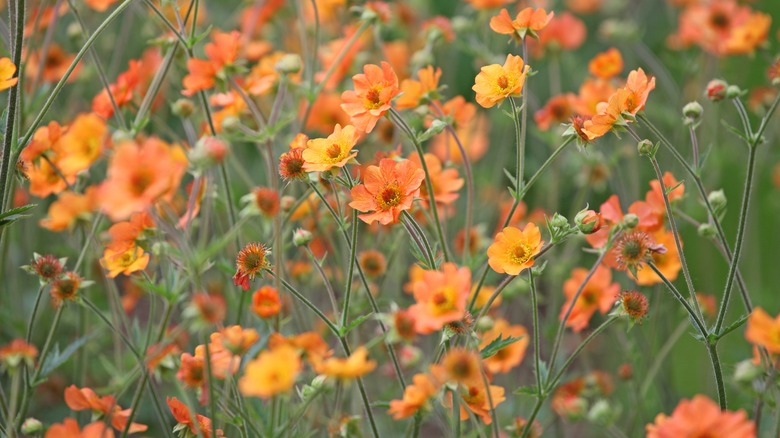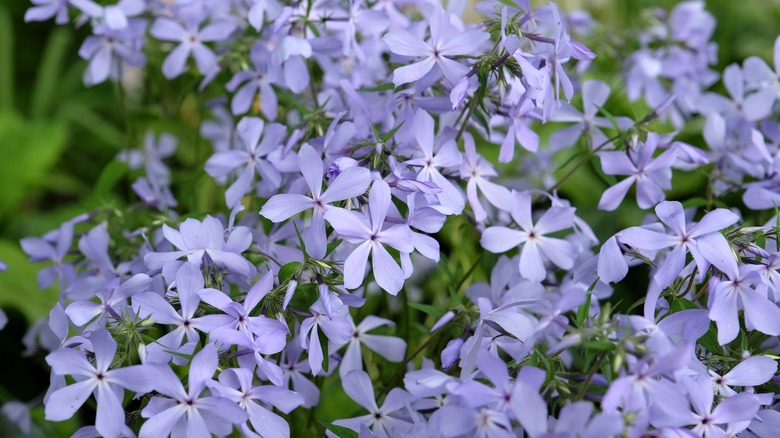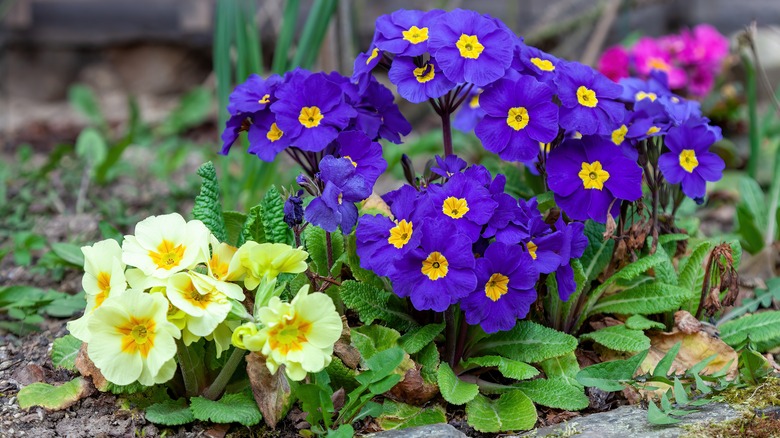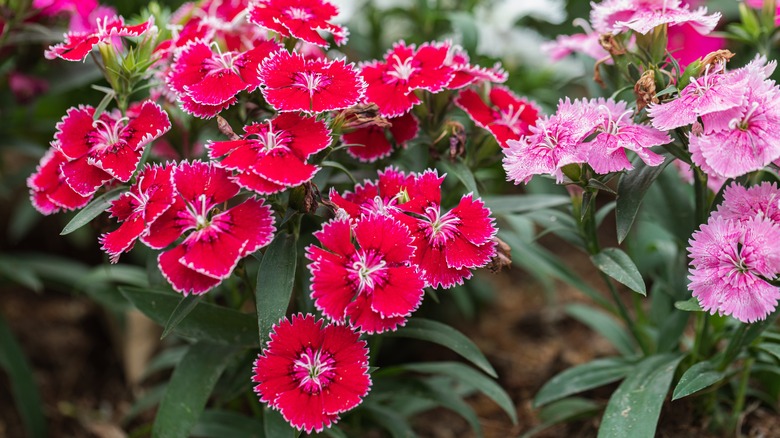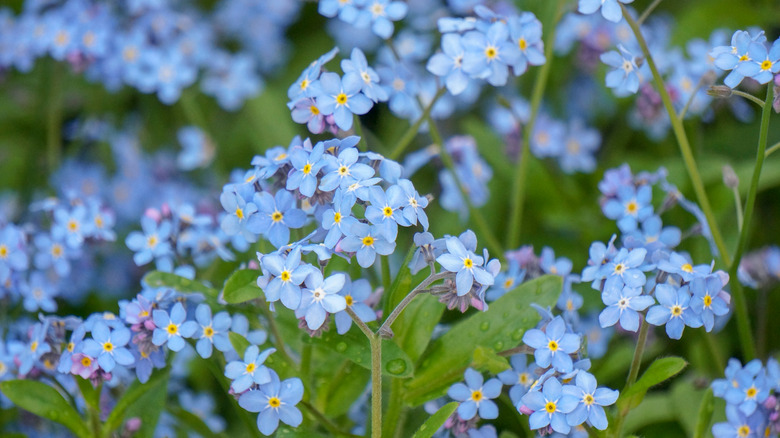Plant These Spring-Blooming Perennials Near Your Bulbs For Non-Stop Blossoms
Spring blooming bulbs put on a glorious show in early to mid spring, but what happens when they're done? There are plenty of hardy perennials that bloom in spring to help keep your spring garden flowering continuously. Some bulbs need to keep their foliage intact after the blooms drop off, to feed the bulbs for the next year. Having some perennials flowering near your bulbs can camouflage their fading foliage and draw the eye to new, vibrant blooms in mid to late spring.
When planting your spring-blooming perennials, be sure to allow ample space for them to spread a bit, and don't crowd your bulbs, which will also increase every year. In fact, when you divide your bulbs or perennials, do them at the same time (early autumn is best) so you can relocate them strategically. Also, consider the size and shape of the blooming perennials to make sure they complement the shape and placement of your spring-blooming bulbs.
The spring garden is often a favorite showcase opportunity for gardeners who enjoy designing the garden through the seasons. Give some thought to colors and textures when adding new bulbs and perennials. The choices listed here allow for many exciting color palettes and combinations of shapes and textures, and most spring-blooming flowers can be grown in either sun or shade areas. Don't forget to consider eye-catching foliage in your overall design, and add some hostas and heucheras too.
1. Hellebores
The cold-hardy hellebore (also known as Lenten rose) often starts blooming in early spring and continues to produce flowers well into late spring. The range of colors is dazzling, from snow-white to a deep red-purple that looks almost black. They dislike being moved, but once established they will grow into large, healthy clumps. They bloom well in shady or sun-dappled spots and like a rich, well-drained, slightly alkaline soil. The smooth, leathery leaves of hellebores will often stay green all winter long. They are deer-resistant and also relatively drought-tolerant.
2. Bleeding heart
With its delicate heart-shaped flowers and graceful leaves, the well-loved bleeding heart (Dicentra) is a sturdy perennial that blooms beautifully in shade. The most common variety is a hot carnation pink with white accents, but it also comes in a pure white cultivar ('Alba'), and some newer hybrids that range from pale pink ('Cupid') to dark red ('Bacchanal'), as well as miniature varieties ('King of Hearts'). Bleeding heart plants increase in size each year, and should be divided every three or four years to keep them from getting too big.
3. Lungwort
Lungwort (Pulmonaria saccharata) is named for its silver-spotted green leaves that are somewhat lung-shaped. This vigorous, shade-loving perennial has beautiful, delicate flowers that come in a plethora of cool colors from pale pink ('Pierre's Pure Pink') to periwinkle blue ('Twinkle Toes'). There is often a wide range of bloom color on the same flower as the season progresses. Blooming from mid to late spring, lungwort grows well beneath tall hostas. The plants increase slowly in size each year and can be easily divided and planted throughout the garden. Deadheading them after the first bloom encourages reblooming.
4. Columbines
Columbines (Aquilegia) are gorgeous starry flowers with attractive foliage that come in a rainbow of colors and forms. They bloom nicely in shade and can also tolerate a fair amount of sun. The seeds sow themselves readily into the garden and if you have more than one variety, they will often hybridize and create new color combinations. Columbines take a while to grow into clumps that can be divided, as they tend to form one large, woody root; but eventually, the root splits into multiple segments that can be divided by cutting.
5. Geum
The geum (Avens) is a hardy, sun-loving perennial with dark green geranium-like leaves and colorful round flowers with five or more petals atop delicate stems. Geums are available in a large palette of warm shades, including pale apricot ('Apricot Pearl'), soft pink ('Tempo Rose'), and bright orange ('Totally Tangerine'), as well as two-toned cultivars ('Cosmopolitan'). They need well-drained soil rich in organic matter, and they should be divided every other year to keep them vigorous. Their sprightly colors and smaller size (9 to 12 inches tall) make geums a good accent flower in the cottage-style garden.
6. Woodland phlox
The woodland phlox (Phlox divaricata) has star-shaped flowers similar to creeping phlox (Phlox sublata), but the plants are taller (10-15 inches). Woodland phlox blooms for weeks from mid-spring to early summer. The heirloom varieties are pale lilac blue or white ('May Breeze'), but newer hybrids have slightly larger, more rounded flowers in more vibrant shades of deep periwinkle ('Blue Moon') and bi-colors like 'Chattahoochee' (pale blue with purple eyes). Woodland phlox are cold hardy and long-lived, increasing slightly each year, and easily divided to spread beauty in your semi-shaded garden areas.
7. Primroses
These dainty-looking but vigorous flowers are well-loved in their native Europe, where many folk songs mention primroses as symbols of spring romance. Among the earliest spring perennials to bloom, low-growing primroses (Primula vulgaris) do well in part shade to part sun. Their vibrant colors range from delicate pastels to deep violet and red, with bright, cheery yellow centers. Primroses like moist, rich soil and will often spread themselves in woodland areas and near ponds, or in meadows near forest edges. Primroses attract a number of beneficial pollinators, including bees, butterflies, moths, and various beetles.
8. Pinks/dianthus
Dianthus, commonly known as pinks due to the many pink colors they come in, are delicate-looking but sturdy, vigorous flowers that grow in either clumping forms with slender leaves or spreading forms with thin, needle-like leaves. The double-petalled varieties are carnations, recognizable by their pleasing clove-like fragrance and their long vase life as cut flowers. A multi-colored version with clumps of smaller flowers is known as Sweet William. Spreading dianthus are perennial, but the clumping dianthus sold as annuals will return for several years. Deadheading the flowers will encourage more blooms.
9. Forget-me-nots
These charming, delicate flowers lend an airy, fairy-like magic to spring gardens with their sprays of tiny sky-blue, pale pink, or white flowers. They bloom for several weeks and the airy sprays fill in bare spots nicely. If you don't want them to reseed too eagerly in your yard, cut back the stems before the seeds dry out. But if they do spread, the shallow roots are very easy to remove. Forget-me-nots (Myosotis) bloom nicely in shade and prefer soil that stays relatively moist. They will tend to naturalize in woodland gardens or marshy areas.
